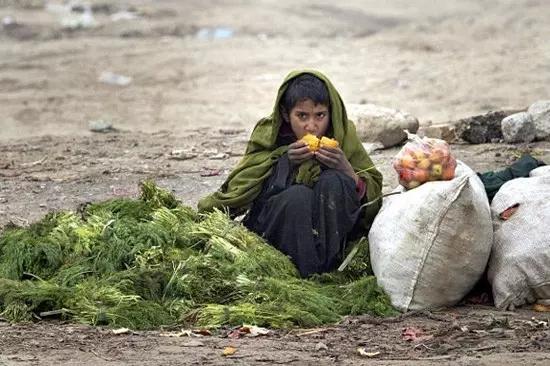Despite the fact that we produce more than enough food to feed the entire world population, why is that one in every nine people are starving?
尽管我们产出的食物足够满足全世界人口的需求,但为什么仍有1/9的人吃不饱饭?
The answer is simple - we never learned not to waste food. No matter how many times, by how many different people, in how many different ways we are told, we never stopped wasting food. In fact, we devised new ways to do so.
答案很简单--我们从来就没有学会不浪费食物。不管我们被不同的人以不同的方式告知了不知多少次,我们从未停止浪费食物。事实上,我们还创造出了新的方法去浪费。
Roughly, one-third (1.3 million tons) of the total food produced, is lost or wasted every year.
粗略估计,全世界每年约有1/3的食物(约130万吨)被损耗或浪费。
According to the Food and Agriculture Organization of United Nations, if all the food wasted or lost in Latin America, Europe and Africa alone could be saved, it can feed approximately 800 million people.
据联合国粮食农业组织的数据显示,如果仅将拉美、欧洲和非洲被浪费掉的食物累积起来,大约能养活8亿人口。
Be it rich or poor, every nation is wasting food indiscriminately.
无论贫富,每个国家都在任性的浪费着食物。

In developing countries, most of the loss occurs at early stages of food processing due to poor harvesting methods and bad storage and cooling facilities.
在发展中国家,由于落后的收割、储存和冷藏方式,大多数浪费都发生在食品加工的初级阶段。
For example, properly constructed grain silos can reduce the loss to rodents and insects from 20 percent to a mere 1-2 percent.
比如,合理建造粮仓,可以将谷物受啮齿和昆虫类动物侵害的损失降低20%,或者只是1-2%。
Tomatoes, if transported in crates instead of burlaps, can be prevented from bruising.
再比如西红柿,如果用板条箱运输而不是用麻袋,可以避免碰伤。
In developed countries, most of the food loss occurs at the retail and consumer level.
而在发达国家,大多食物的浪费都发生在零售和消费环节。
The aesthetic standards set by organizations such as USDA (United States Department for Agriculture) are so ridiculous that much of the fruits and vegetables produced never see the inside of a store.
如美国农业部等部门发布的审美标准是如此奇葩,以至于许多水果和蔬菜都还未进超市就被丢弃了。
Many stores have even stricter standards than the USDA's and even more produce is rejected.
有一些商店的标准比农业部的更为严格,以至于更多的商品被浪费掉了。
Grocery stores also tend to overstock to nurse the impulse of shopping for buyers.
考虑到顾客的购物冲动,杂货店也倾向于储存更多的商品。
The fully loaded shelves, with colorful fruits and vegetables, attract more buyers than the half or almost empty ones. If there is only one head of broccoli left on the shelf, it's probably not good.
摆满了货物的货架,玲琅满目的果蔬,比只有一半的或者几乎空着的货架更有吸引力。如果上面只有一颗花菜,那极可能是次品。
A lot of packed food is either not bought or thrown out by consumers or the stores themselves because it has passed its sell-by or use-by date, which has nothing to do with food safety standards (as widely believed), but is a date guessed by the manufacturers, kept as tight as possible to bump-up their sales.
很多包装食品也因为过期未售出而被店家扔掉,或是过期未食用被消费者扔掉,而这与食品安全标准一点关系也没有(被广泛认同),然而据猜测保质期可能是与生产厂家有关,被用来以促进销量。
Even when asked, stores do not donate the food that is close to or has passed its sell-by-date out of the fear of accidentally poisoning someone and ending up being sued.
即使被问及,商家也不会将临近过期或者已过期的食品捐赠出去,因为他们担心可能引起食物中毒,最终被起诉。
The benefits of saving our environment and getting rid of malnutrition and starvation should be incentive enough to encourage people to eat ugly, yet perfectly healthy fruits, not be stuck on the expiration dates and to pick that last cucumber on the shelf.
保护环境、摆脱营养不良和饥饿的好处应当足够能激励人们去吃那些不好看但却足够健康的水果,而不是陷入保质期的怪圈,买走货架上最后一根黄瓜。
It may not seem like a lot in the beginning but these small steps may go a long way in ending world hunger.
这些事情一开始看起来可能微不足道,但这些小小的改变却能为世界对抗饥饿做出巨大贡献。













